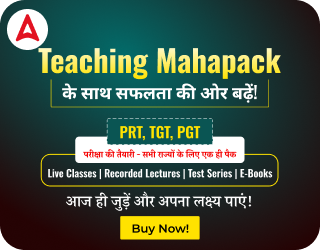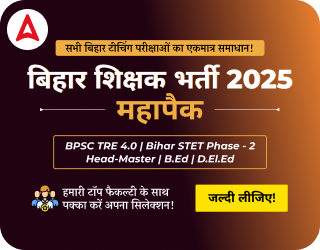Table of Contents
The MAHA TAIT Admit Card 2025 was released on 25 May 2025, and candidates can download it directly from the official website, www.mscepune.in. This hall ticket includes essential details such as the exam date, shift timings, and exam center address. The Maharashtra State Council of Examinations conducts the Maharashtra Teacher Aptitude and Intelligence Test (MAHA TAIT) to evaluate candidates’ eligibility for teaching positions in government and aided schools across Maharashtra. To make the process easier, a direct download link for the MAHA TAIT Hall Ticket 2025 is available in this article.
MAHA TAIT Hall Ticket 2025 Out
The MAHA TAIT Exam 2025 has been rescheduled and will now be conducted from 27 to 30 May and 2 to 5 June 2025 at various exam centers across Maharashtra. Candidates can download the MAHA TAIT Hall Ticket 2025 from the official website to check their exam details. The exam includes 200 multiple-choice questions carrying a total of 200 marks, with a duration of 2 hours. Qualifying this exam makes candidates eligible to apply for teaching positions in government and aided schools across Maharashtra.
MAHA TAIT Exam Hall Ticket 2025
Candidates who have successfully submitted their online application for the MAHA TAIT 2025 Exam can now download their MAHA TAIT Hall Ticket 2025 from the official website. The admit card includes key details such as the exam center, date, and shift timings. To access the hall ticket, applicants must enter their Registration Number or Roll Number along with their Password or Date of Birth.
| MAHA TAIT Hall Ticket 2025 | |
| Organization | Maharashtra State Council of Examination |
| Exam Name | Maharashtra Teacher Aptitude and Intelligence Test (MAHA TAIT) |
| Maha TAIT 2025 Hall Ticket Date | Released |
| Maha TAIT Exam Date | between 27 May to 30 May 2025 and 2 June to 5 June 2025 |
| Number of Questions | 200 |
| Total Marks | 200 |
| Mode of Examination | Online (CBT) |
| Hall Ticket Notice | Download PDF |
| Official Website | www.mscepune.in |
Download Link for MAHA TAIT Hall Ticket 2025
Candidates can download the MAHA TAIT Hall Ticket 2025 by clicking the direct link provided below and logging in with their valid credentials. Once downloaded, ensure you print a clear copy of the admit card and carry it to the exam centre, as entry will not be permitted without it. Double-check all the details mentioned on the hall ticket, including the exam date, time, and venue, before heading to the examination hall.
MAHA TAIT Hall Ticket 2025 Download Link
Step-by-Step Guide to Download the MAHA TAIT Hall Ticket 2025
The MAHA TAIT Hall Ticket 2025 has been issued online, and no hard copy will be sent to the candidates individually. Hence, they should read the instructions given below to learn how to download the hall ticket from the official website without hassle.
- Visit the official website of the Maharashtra State Council of Examination (MSCE) @ www.mscepune.in.
- Locate the ‘MAHA TAIT Exam Hall Ticket 2025’ link on the homepage and click on it.
- Enter your login credentials, such as User ID and Password, in the candidate login portal.
- Download and print the admit card for future reference.
MAHA TAIT 2025 Exam Date
| MAHA TAIT 2025 | |
| Maha TAIT 2025 Exam Date | 27 May to 30 May 2025 and 2 June to 5 June 2025 |
| Time |
|
Printed Details on MAHA TAIT Exam Hall Ticket 2025
The MAHA TAIT Exam Hall Ticket 2025 will typically include essential candidate details and examination information. Here’s a brief list of the information usually printed on it:
| Details Mentioned on the MAHA TAIT Exam Hall Ticket 2025 | |
| Candidate’s Details |
|
| Examination Details |
|
| Important Instructions |
|
What if you forgot your Registration Number or Password?
If you’ve forgotten your MAHA TAIT 2025 registration number or password, don’t worry- it happens often. Start by checking your registered email or mobile number for the confirmation message sent during your application process. If the details aren’t there, simply click on the “Forgot Registration Number/Password” link on the MAHA TAIT login page. Enter the required information, and your login credentials will be sent to your registered email or phone. This quick recovery process will help you access your account and download your hall ticket without hassle.
How to Correct Errors in the MAHA TAIT 2025 Hall Ticket?
Sometimes, candidates may have trouble downloading the MAHA TAIT Call Letter 2025 or notice errors in the details on the admit card. The MAHA TAIT Admit Card 2025 is required to take the exam. If you encounter any issues, contact the Maharashtra State Council of Examination during working hours for help.
- Phone No: 020-26123066/67
- Email ID: msce.tait2025@gmail.com
What to Carry for the MAHA TAIT 2025 Exam Day?
Candidates appearing for the MAHA TAIT Exam 2025 (between 27 May to 30 May 2025 and 2 June to 5 June 2025) must carry all the necessary documents. Here’s what you need to bring on the exam day:
- A printed copy of the MAHA TAIT Admit Card 2025 with your photo and name visible.
- Make sure all the information on the admit card is complete and correct.
- A valid photo ID and a passport-sized photograph.
- A blue or black ballpoint pen for answering the questions.
- A personal water bottle (if allowed by the exam center).
Exam Day Instructions
The MAHA TAIT Call Letter 2025 will likely include specific exam day instructions to ensure smooth conduct and compliance. Here are common instructions typically mentioned:
- Arrival Time: Arrive at the exam center 30 to 45 minutes before the reporting time. Late arrivals may not be allowed to enter.
- Required Documents: Bring a printed copy of your MAHA TAIT Hall Ticket and a valid photo ID (Aadhaar, PAN, or Voter ID).
- Stationery: Only essential items like a black or blue ballpoint pen are allowed. Electronic devices, calculators, and loose papers are not allowed.
- Prohibited Items: Do not bring electronic gadgets, calculators, smartwatches, study materials, or bags. Possessing these can lead to disqualification.
- Exam Conduct: Follow all instructions from the invigilators. Miscommunication or misconduct may lead to disqualification.
- Hall Ticket and ID Verification: Your hall ticket and ID will be checked at the gate. Any issues with the documents may result in being denied entry or disqualified.
Maharashtra TAIT Exam Pattern 2025
- Exam Mode: Offline (OMR-based)
- Exam Duration: 2 hours
- Total Questions asked: 200 multiple-choice questions
- Sections: Aptitude: 120 questions (60%) and Intelligence: 80 questions (40%)
| Subjects | No. of Questions |
| English Language | 15 |
| Marathi Language | 15 |
| General Knowledge | 30 |
| Child Psychology and Pedagogy | 30 |
| Quantitative Aptitude | 30 |
| Reasoning Ability | 80 |
Last-Minute Preparation Strategy
With limited time left before the exam, here are some useful tips to prepare:
Revision Focus
- Spend more time on areas you find difficult
- Go over important formulas and key concepts
- Practice with past exam papers
Time Management
- Aim to spend around 40 seconds on each question
- Answer the easier questions first
- Mark the tough ones to come back to later
Health Management
- Get enough sleep
- Eat light, healthy meals
- Drink plenty of water
Logistics
- Plan your route to the exam centre
- Make sure you have all the necessary documents
- Prepare your exam kit the day before
Post-Exam Procedures
After finishing the exam, candidates should:
- Keep the Admit Card: You’ll need it later
- Write Down Questions: Useful for checking the answer key
- Check the Official Website: Look for result updates
- Get Ready for the Next Steps: Prepare for document verification or an interview
| MAHA TAIT Articles 2025 | |
| MAHA TAIT Exam Analysis 2025 | MAHA TAIT Answer Key 2025 |
| MAHA TAIT Result 2025 | |




 HPSC Assistant Professor Admit Card 2025...
HPSC Assistant Professor Admit Card 2025...
 MPPSC Assistant Professor Admit Card 202...
MPPSC Assistant Professor Admit Card 202...
 UGC NET Admit Card 2025 Out for June Ses...
UGC NET Admit Card 2025 Out for June Ses...




